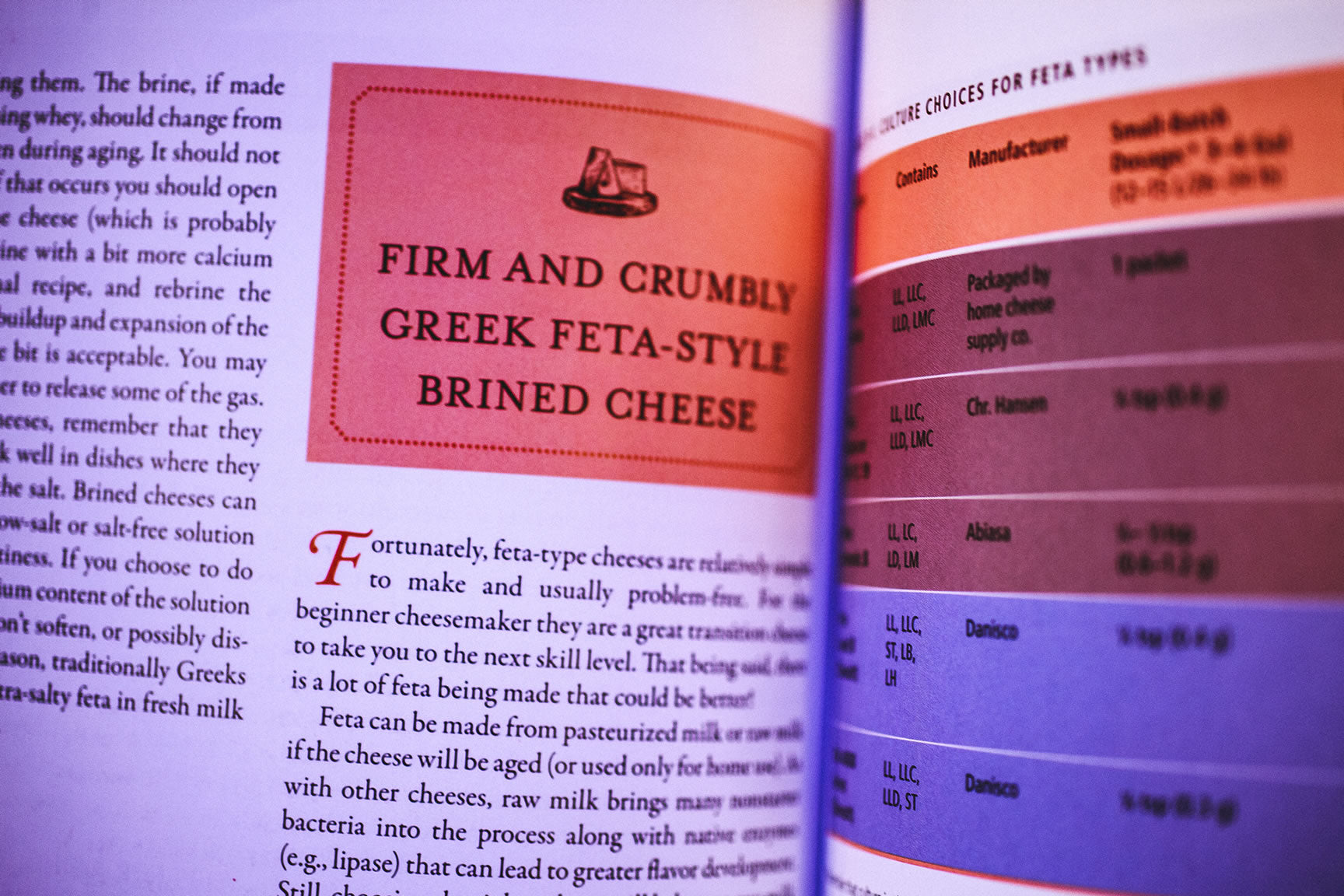- Continue Shopping
- Your Cart is Empty
Our Top 3 Cheeses to Make at Home - Easy, Cheesy & Beautiful

1) Chevre
Make chèvre. It is the world's easiest cheese. Or, if you do not have access to goat's milk, make fromage blanc. The process is just the same, and the results are just as impressive.
All that you, the budding cheesemaker, have to do, is heat the milk up to 86 degrees, sprinkle in the culture, and let it sit for 12 hours. Then you hang it up to drain for another 6 hours. Voila, you're done!
There is more fun to be had, should you wish to impress your friends even more. Chèvre and fromage blanc can be placed in forms to be drained; a pyramid shape is traditional. It can be patted and formed into logs or rounds, rolled in herbs, or decorated with flower petals and herb sprigs for a truly beautiful presentation.Try grinding fennel and lavender in a mortar and pestle, and coating the outside of the cheese with an unusual and delicious flavor combination.
Honey and lemon peel, dill and pepper, herbs de provence, are some more of my favorite flavor combinations. And of course, salt to taste.
Trust me. In the past I've spent 7 hours making a traditional cheddar cheese, aged it for 6 months, and, while the results were delicious, I still get far more compliments on this simplest of cheeses than I do on any of the hard cheeses.
See our Chevre video workshop for more on this scrumptious cheese!

2) Mozzarella
This is a fantastic cheese to make at home. While 30 minute recipes abound, I get more reliable results with the more traditional recipes, that take longer, and use starter culture rather than citric acid to acidify the milk for cheesemaking. Regardless of which method you use, the best part of this cheese is the stretching! As the curd matures, it becomes glossy, pliable, pure white and as stretchy as taffy. It must be dipped into the hot salted whey, repeatedly, kneaded and stretched again, each time becoming more luxuriant and shiny.
I'm trying not to get too poetic here, but it really is a beautiful thing, deeply satisfying, and unlike any other food process I know. It's a unique experience, to coax something so mysterious and beautiful from a pot of ordinary milk. It will make you see mozzarella, that innocuous white pizza topping, in a whole new light!
Another, not insignificant benefit to this cheese, is that of instant gratification. While the process itself takes more than an instant, the cheese can be consumed as soon as it is made. Many cheeses, like cheddar, gouda, or jack, require weeks if not months of aging for their optimum flavors to really shine. Mozzarella, however, is best enjoyed soon after it has been made, and is itself the perfect reward for spending all that time in the kitchen!

3) Feta
Feta is another excellent choice for the beginning cheesemaker. It incorporates all of the processes used in making 'hard cheeses', while taking less time to make and requiring less equipment. While cheesemaking is not an expensive hobby, some of the initial costs can be daunting, particularly that of a press. And while there are some clever solutions to that issue, one of the best ways to try on a new hobby is to ease into it and see if it really feeds your soul. Enter feta!
The beginning steps in making feta are, broadly, the same as those for making other hard cheeses, such as cheddar or jack. We heat the milk, add the culture, and allow for time to ripen. We add the rennet and wait again, then cut the curd and stir it...when these steps have been followed, you will have most of the experience necessary to feel comfortable taking on some of the other hard cheeses. (And, just to clarify, what I mean by 'hard' is texture, and firmness, not level of difficulty!)
What sets feta apart from the other cheeses is that no cheese press is necessary to get the final firm texture of the cheese. Feta is simply ladled into a cheesecloth and hung to drain for several hours, at the end of which time it is firm and ready to be salted or brined.
Although it's full texture and flavor potential will develop over the next several days, it is totally fair game to eat some of this cheese on the day it is prepared. Eating a little bit each day will not only give you a window on the aging process of cheese, but it will also be delicious. See my very own feta recipe!
You can check out all of our cheesemaking equipment, starter cultures, kits and more in our Home Cheesemaking Department.
Over to You...
It’s part of our mission here at Mountain Feed to help you make delicious, sustainable, homemade food more often. Stop by and say hello on Facebook, Twitter, Instagram or Pinterest. Or, as always, you can do it the old fashioned way and come by the store to speak with one of our in-house experts.
Keeping a great journal leads to delicious results! Get inspired by new recipes, expert articles and homemade food adventures in our Monthly Journal.
